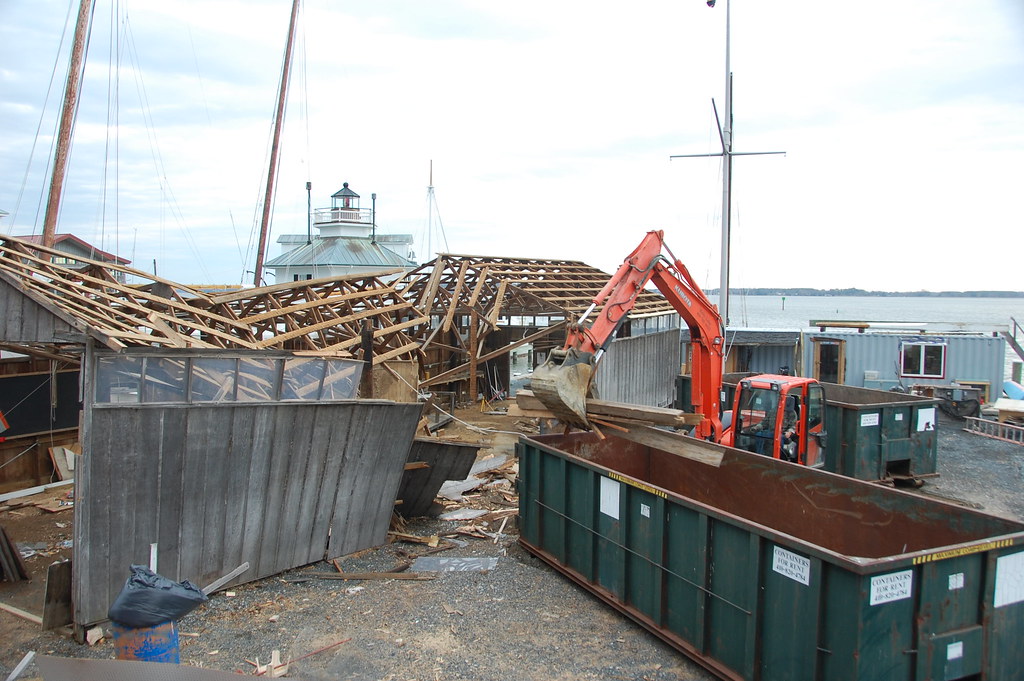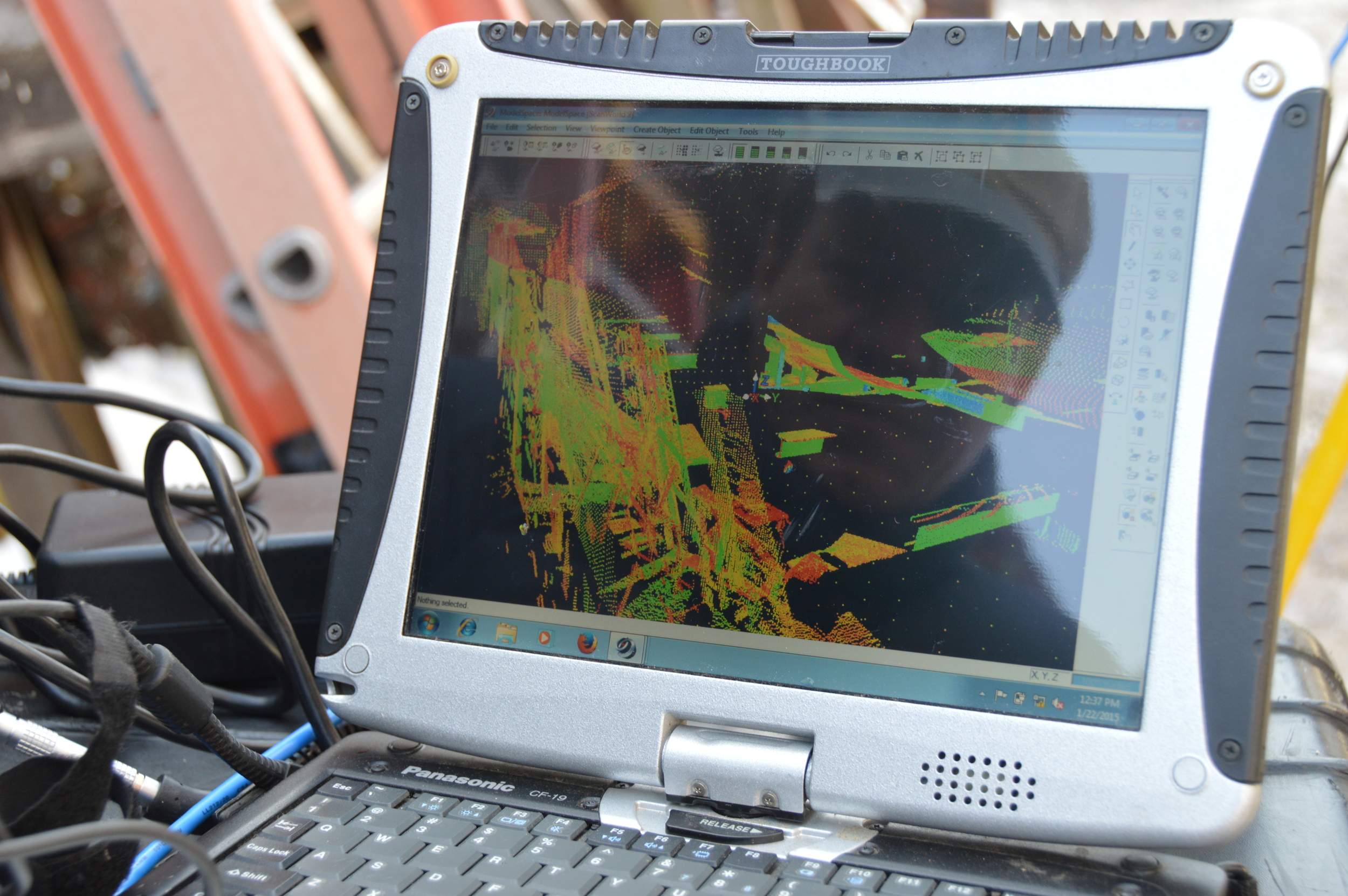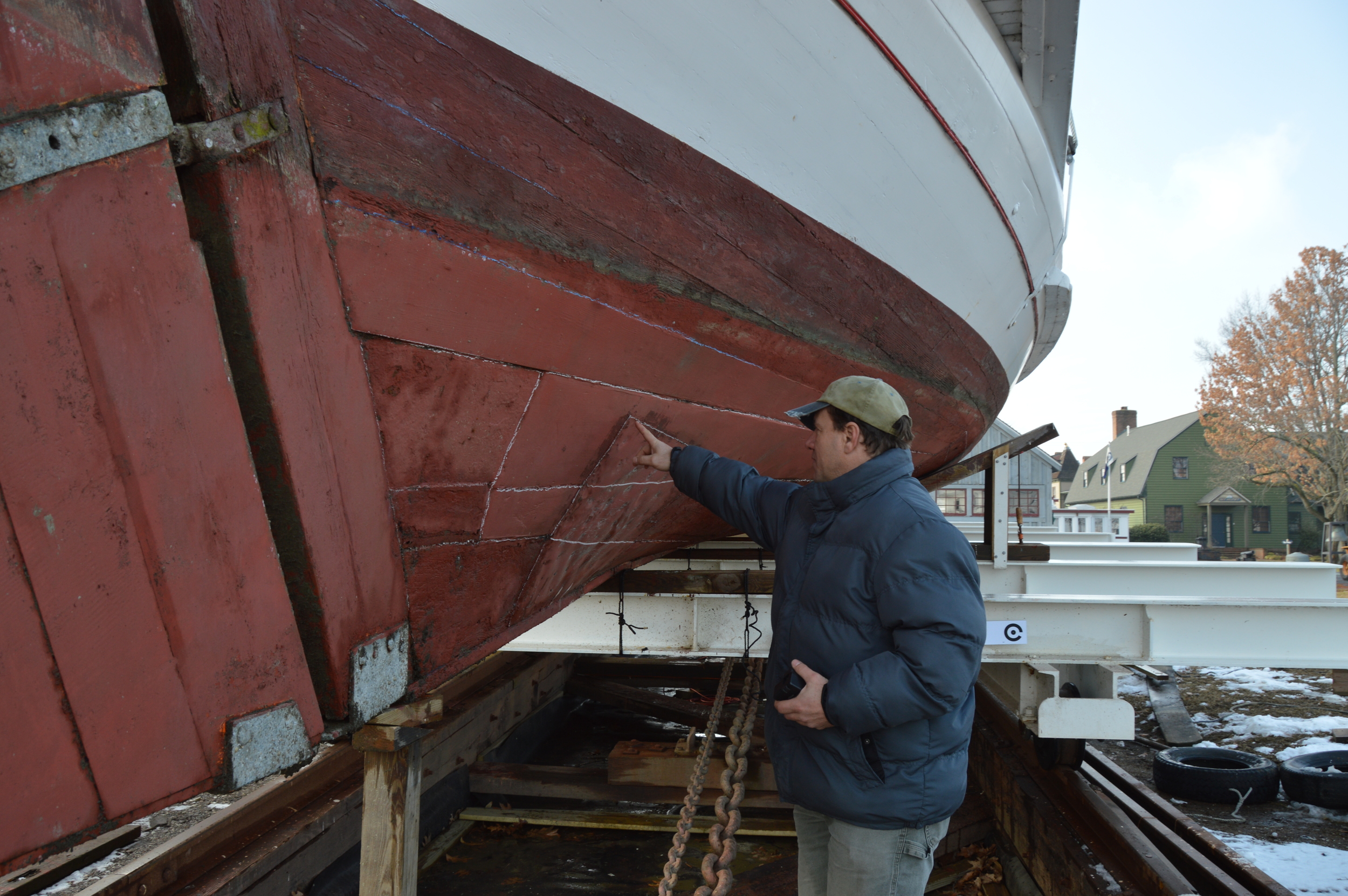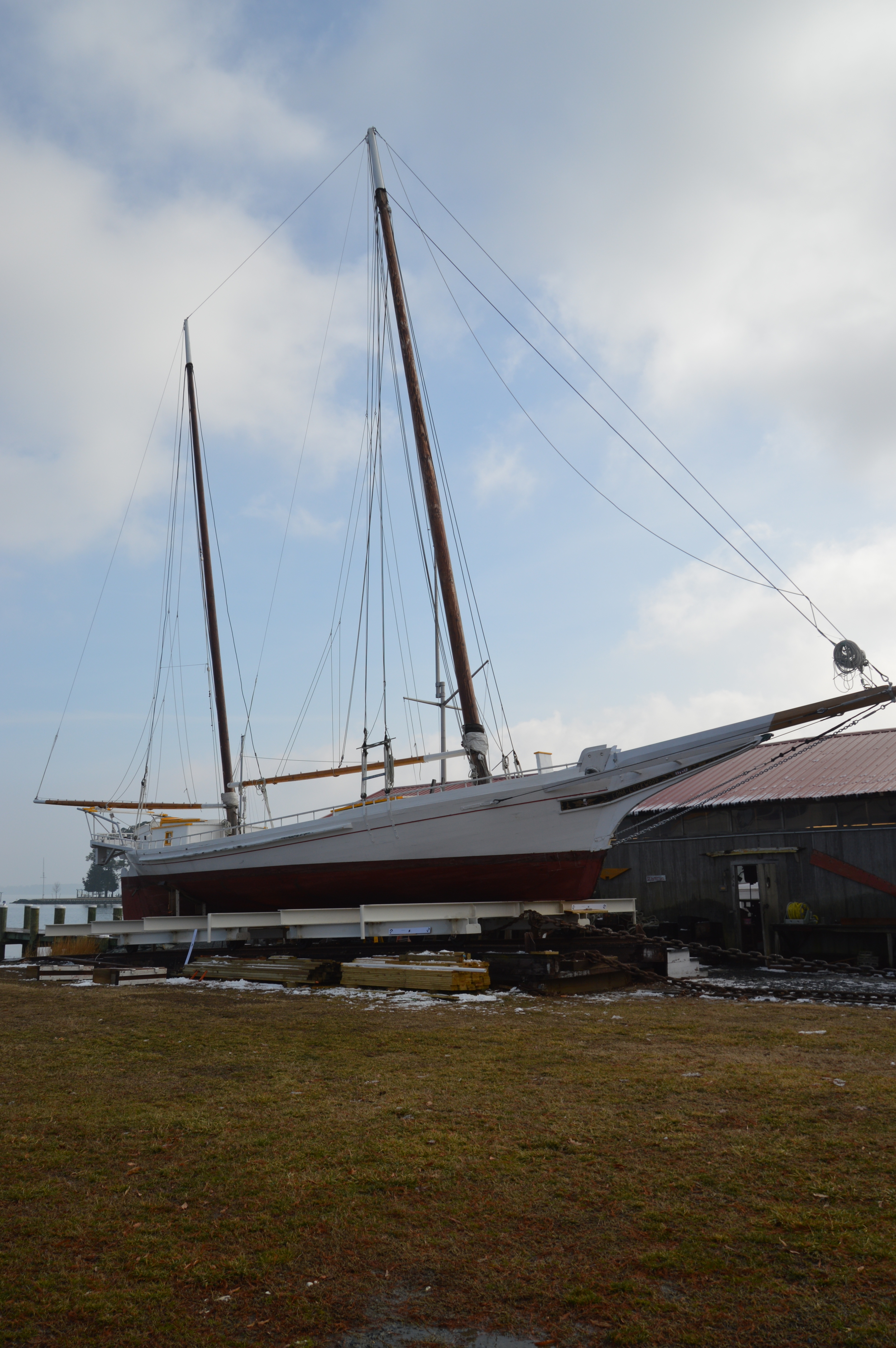Chesapeake Bay Maritime Museum Boatyard Manager Michael Gorman, along with his apprentices and volunteers, have hauled out the 1889 nine log bottom bugeye Edna E. Lockwood this winter to make room for the National Park Service to laser scan and photograph the historic boat’s log hull.
The information is being put together by NPS’s Heritage Documentation Programs to document the different parts of the hull and how they come together as a greater whole. The project is part of the Historic American Engineering Record (HAER) Maritime Documentation Program, with the produced measured drawings added to the HABS/HAER/HALS Collection in The Library of Congress to document the last working oyster boat of her kind. For CBMM, the information gained will be turned into a 3D model to aid museum shipwrights and apprentices in the restoration of the Edna E. Lockwood.
The nine logs making up the historic bugeye’s hull are in need of replacement, with the restoration project planned to begin in late 2015. Just as Native American dugout canoes were formed by carving out one log, this bugeye’s hull is constructed of a series of pinned logs shaped and hollowed out as a unit.
In 1889, at the age of 24, John B. Harrison of Tilghman Island built the Edna E. Lockwood, the seventh of 18 bugeyes he was to build. Harrison also built the log canoes Flying Cloud and Jay Dee.
Built for Daniel W. Haddaway of Tilghman Island, Edna E. Lockwood dredged for oysters through winter, and carried freight—such as lumber, grain, and produce—after the dredging season ended. She worked faithfully for many owners, mainly out of Cambridge, MD, until she stopped “drudging” in 1967. In 1973, Edna was donated to the Chesapeake Bay Maritime Museum by John R. Kimberly. Recognized as the last working oyster boat of her kind, the Edna E. Lockwood was declared a National Historic Landmark in 1994.
The museum continues to look for help in sourcing the southern yellow pine logs required to begin replacing Edna’s log bottom. Twelve logs measuring 52’ in length and 3-4’ in diameter are needed.
To see video of the NPS at work on the Edna E. Lockwood, visitwww.bit.ly/Edna_NPS. For more information on the Edna E. Lockwood, visit www.cbmm.org.













